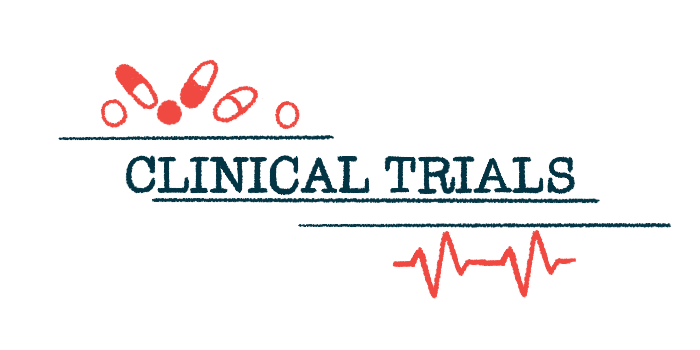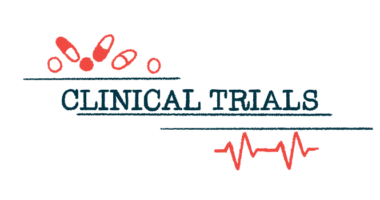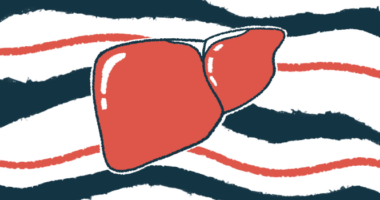AHB-137 effective for chronic hepatitis B: Phase 2b clinical trial
Ausperbio's experimental therapy safely suppressed disease-causing virus

AHB-137, Ausperbio’s experimental therapy, safely and effectively suppressed the disease-causing hepatitis B virus (HBV) in people with chronic hepatitis B, according to interim data from a Phase 2b clinical trial.
The positive findings — which are overall consistent with previously reported data from an ongoing Phase 1/2a trial (NCT06115993) — were presented in a poster session at the annual European Association for the Study of the Liver Congress, held last week in Amsterdam and virtually.
The poster session was titled “HBsAg loss and seroconversion after 16-week or 24-week AHB-137 treatment in HBeAg-negative chronic hepatitis B participants on NA therapy: results from an ongoing multicenter, randomized phase IIb study” (#LBP-014).
Ausperbio hopes that AHB-137 could ultimately offer a functional cure, where the HBV is no longer actively replicating, or multiplying, and standard antiviral therapies can be stopped.
“These Phase IIb interim efficacy and safety data strengthen the exciting Phase IIa data, demonstrating AHB-137’s potential as a backbone in achieving a functional cure for [chronic hepatitis B],” Guofeng Cheng, PhD, co-founder and CEO of Ausperbio, said in a company press release.
AHB-137 aimed at offering a functional cure
Hepatitis B is a common form of hepatitis, or liver inflammation, that is caused by an HBV infection. Such infections sometimes clear up on their own, but in other cases, they become chronic and can lead to serious liver damage over the long term.
The cornerstone of hepatitis B treatment is antiviral therapy. These medications work to stop the virus from replicating in the body, and while effective, they don’t usually lead to a functional cure and require continued use to keep the virus suppressed.
AHB-137 is intended to offer a functional cure by lowering production of proteins that HBV needs to replicate and infect cells.
It belongs to a class of therapies called antisense oligonucleotides (ASO), which are designed to ultimately promote the breakdown of specific molecules of messenger RNA (mRNA). The latter is derived from DNA and used as a template to produce proteins.
By promoting the destruction of mRNA molecules that are used to produce important HBV proteins, AHB-137 lowers the levels of such proteins, suppressing HBV’s ability to grow in the body. The medication also contains chemical modifications intended to make it more potent and safer than other ASOs, according to its developer.
The Phase 2b trial (NCT06550128), which is ongoing in China, enrolled 64 adults with chronic hepatitis B who were on stable antiviral therapy. All were negative for HBeAg, a protein that indicates HBV is actively replicating in the body, and positive for HBsAg, a protein important for the virus’ ability to infect cells.
Half of the participants received weekly under-the-skin injections of AHB-137 (300 mg) for 24 weeks, or about six months, with a loading dose in the first two weeks. The rest received a placebo injection for the first eight weeks before switching over to weekly AHB-137 for the remaining 16 weeks.
The study’s main goal was to evaluate the proportion of patients who achieve HBV DNA and HBsAg levels in the blood that are below the lower limit of quantification after 24 weeks.
This goal could be achieved independently of whether patients showed seroconversion, or the production of antibodies against the HBsAg protein that demonstrates the immune system’s ability to effectively control the virus and prevent reinfection.
Initial data from Phase 2b clinical trial encouraging
Ausperbio announced earlier this year that the study had completed dosing and initial data were encouraging. The company has now reported that 75% of people on AHB-137 treatment for 24 weeks and 66% of those receiving the therapy for 16 weeks after getting the placebo achieved the primary goal.
Among people who reached that goal in either group, more than 80% achieved HBsAg loss within three months. Moreover, 54% of those in the 24-week treatment group and 33% of those in the 16-week treatment group who met the primary goal showed seroconversion.
“We are very excited by the fast … HBsAg decline, and the high rate of seroconversion,” said Chris Yang, PhD, co-founder and chief scientific officer for Ausperbio.
AHB-137 was tolerated well in both groups with a favorable safety profile, according to the company.
The findings are overall similar to positive interim data from the Phase 2a part of the ongoing China-based Phase 1/2a trial, where AHB-137 was well tolerated and showed early signs of efficacy, including HBsAg loss and seroconversion, in a similar patient group.
While treatment in both trials is completed, participants are being monitored for up to 1.5 years to assess whether viral responses are sustained and to evaluate long-term safety.








